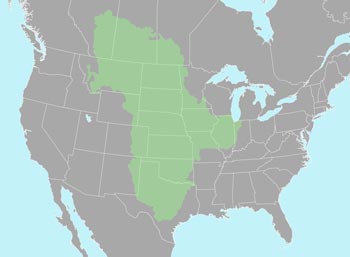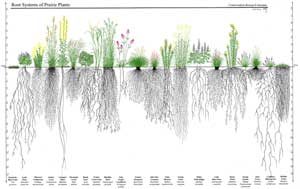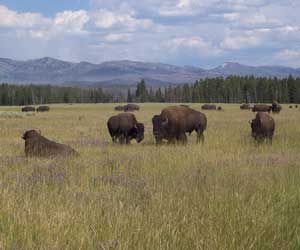North American Prairies

At one time prairies covered much of the central United States and Canada. They stretched from Indiana in the east to Montana in the west, and from Texas in the south, into central Canada in the north. This largely flat, treeless landscape was dominated by grasses, wildflowers, and shrubs. Many of the tall grasses could grow up to 8 to 10 feet tall. Trees grew sparsely due to a lack of precipitation and the frequent fires that were a major part of the prairie lifecycle. Oaks, such as the burr oak, were a dominant tree species due to their resistance to fire.

Unlike forested areas, about 80% of the biomass of the prairie is below ground in the deep root systems that plants use to collect water and nutrients from deep in the ground. Forests will generally be the opposite with around 80% of biomass above the ground, mainly in trees and leaves. Many prairie plants roots could reach between 6 and 10 feet into the ground. This allowed for water and nutrients to penetrate deep into the soil. This process along with the organic material that the plants’ extensive root systems shed as they grew created an extremely rich layer of top soil that could be many feet deep.

In the late 19th century, when the United States began to encourage settlers to move into the great plains region to begin to develop and farm the land, it was mainly vast open space dominated by the bison, Native Americans, and cattle producers. This began the transformation of the prairies from open grassland to primarily agricultural land, and saw the decimation of the bison population to protect fields and crops. The rich topsoil proved to be ideal for farming, and many areas remain some of the best farmland in the world even to the present day.
Although farming practices have improved, and we can produce more than ever with fewer inputs, the transition from prairie to farmland has left many species that depend on the prairie ecosystems stressed. There are many projects today that aim to restore prairie landscapes on scales both vast and small. We can help you create a small piece of the prairie at any scale.
